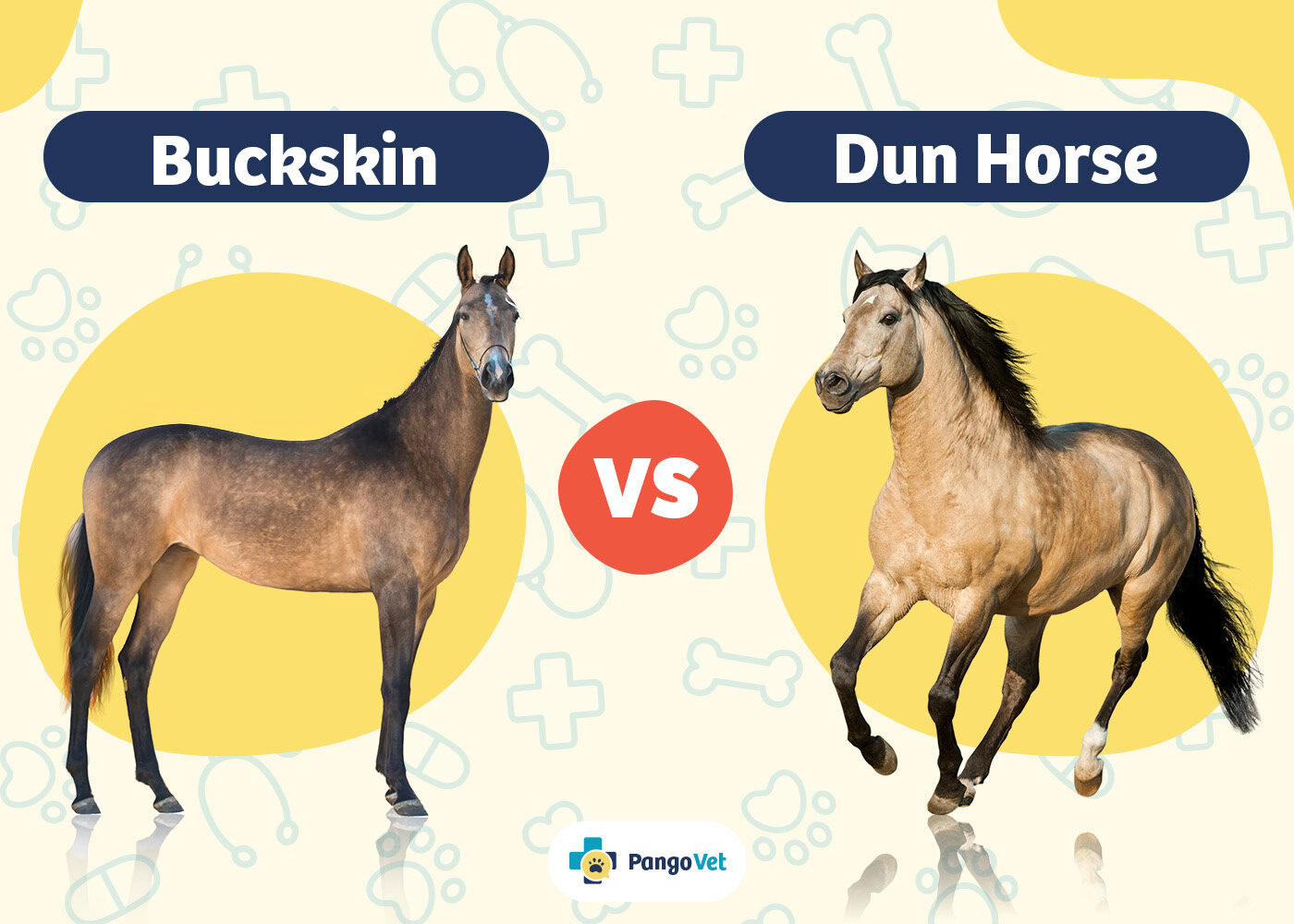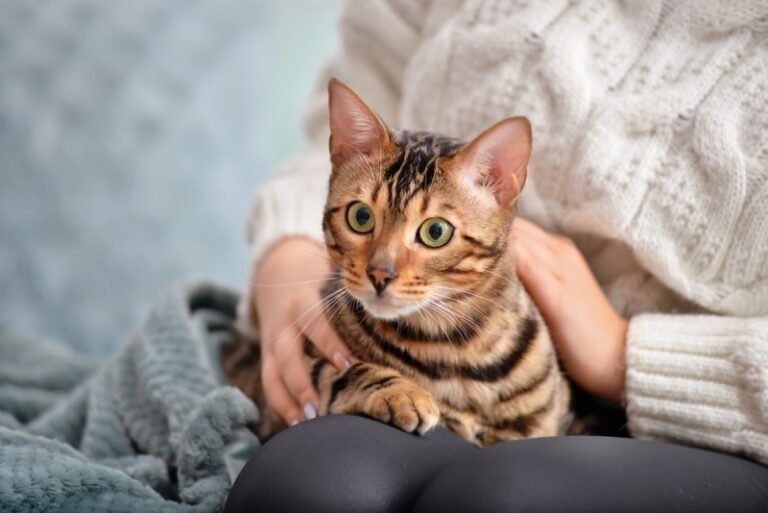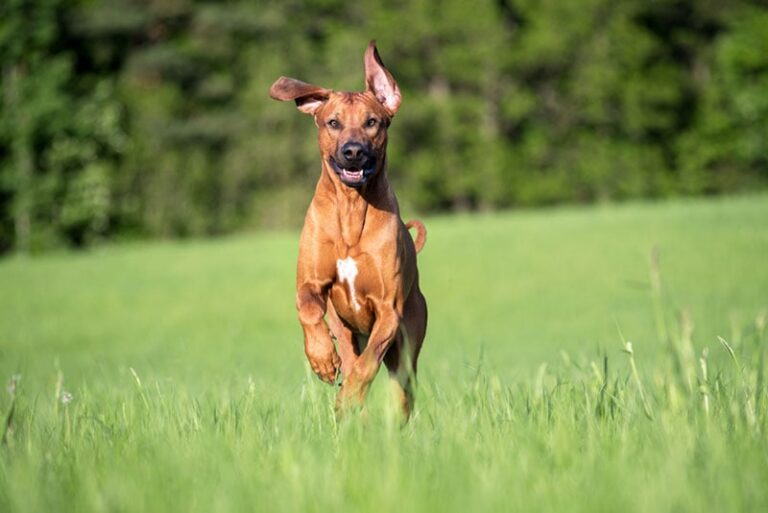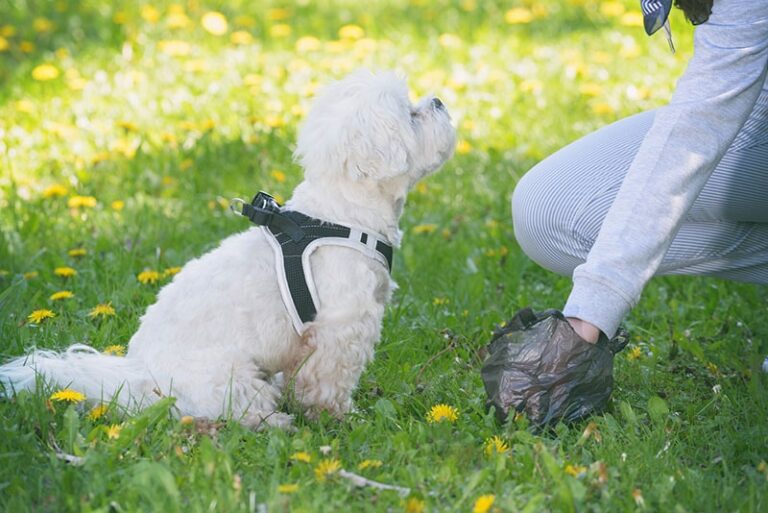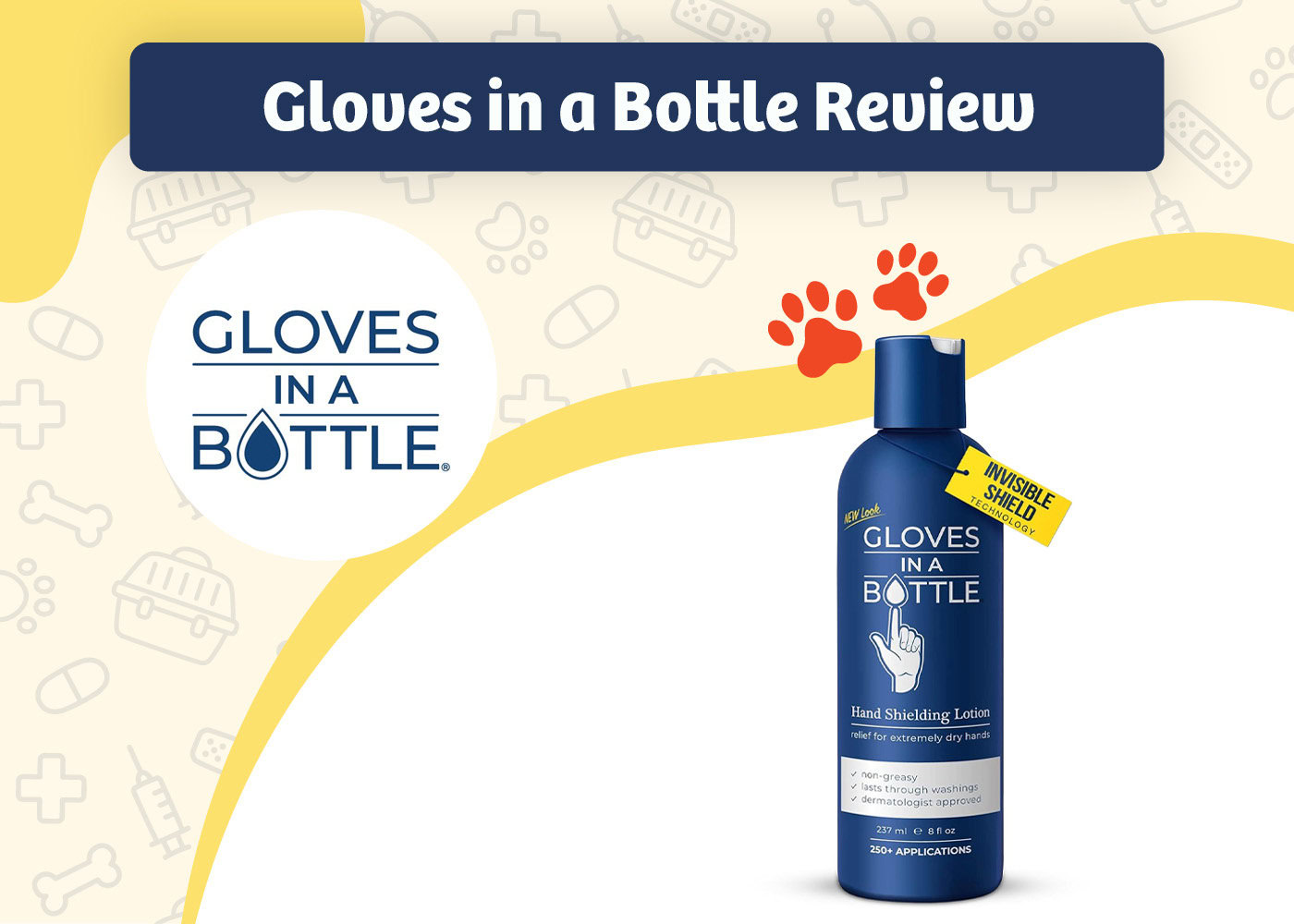VET APPROVED

The information is current and up-to-date in accordance with the latest veterinarian research.
Learn more »Click to Skip Ahead
Contrary to what many believe, the buckskin and dun are not two different horse breeds. Rather, the names buckskin and dun refer to the colors of the horses’ coats. The colors are the result of the genetic makeup of the horse. Both the buckskin and bay dun are so similar in appearance that they are often mistaken for one another, but if you know what to look for, you’ll never mix them up again.
 Buckskin vs Dun Horse Coat Overview
Buckskin vs Dun Horse Coat Overview
The buckskin color is produced when a single copy of the cream dilution gene works on a bay-colored horse, resulting in a horse that has black points (e.g., ear tips and muzzle) and a creamy golden body. If two copies of the cream dilution gene mix with the bay color, the result is a pale cream horse with no color points, pink skin, and pale blue eyes.
The dun coat refers to a pattern rather than a specific color, and there are many different colors of dun horses. It is the bay dun that is most often mistaken for a buckskin. The dun gene creates similar dark points that are seen in bay and buckskin horses, but with some very special differences. This gene has ancient origins and is closely related to the one responsible for the stripes seen on zebras.
Horses with dun coats are distinguished by having a dorsal stripe running from mane to tail and faint zebra stripes at the edge of the dark points of their legs. They may also have some stripes over their withers. The dun patterning is more commonly seen in older, more primitive breeds like the Icelandic, Highland, and Fjord horses, as well as the Przewalski’s horse.
Visual Differences
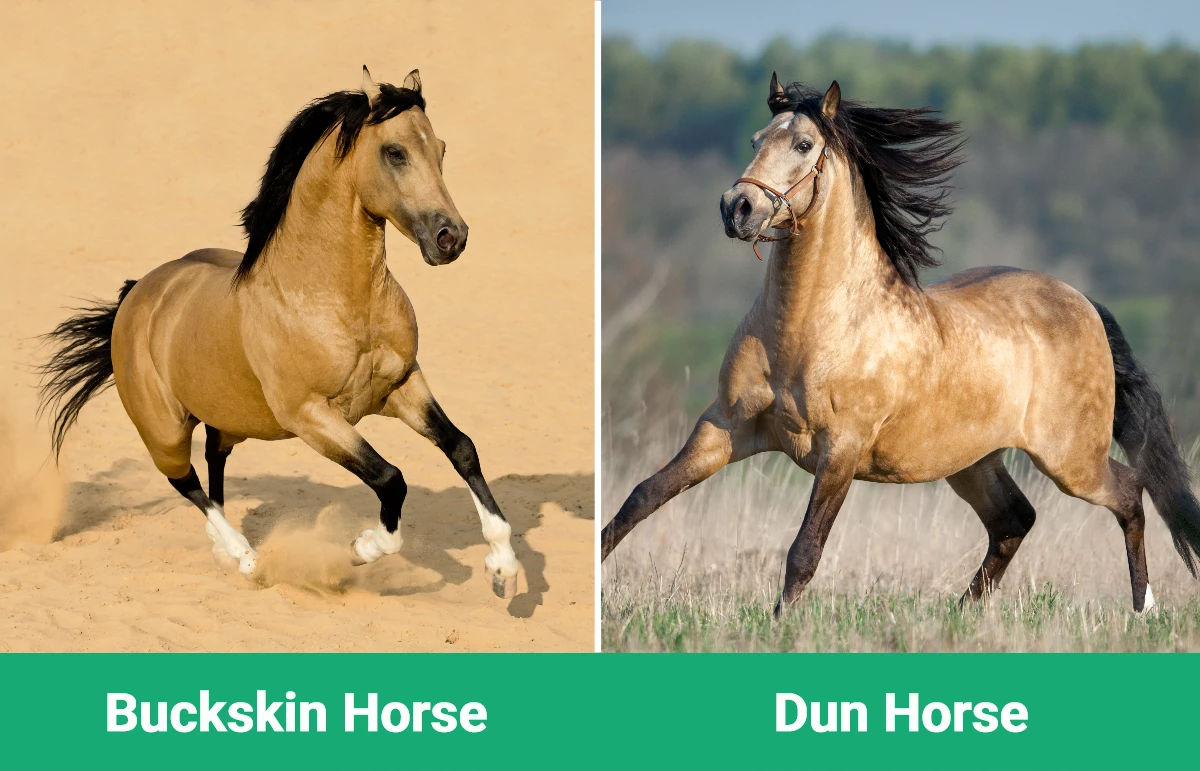
At a Glance
- Base color: Bay
- Diluted coat: Yes
- Mane & tail: Black
- Eyes & skin: Dark
- Primitive marks: Subtle if visible at all
- Dilution gene: Cream
- Hair dilution: All around the hair
- Possible colors: Tan/Light gold with dark points
- Base color: Bay
- Diluted coat: Yes
- Coat color: Tan/Light gold
- Mane & tail: Black
- Eyes & skin: Dark
- Primitive marks: Clearly visible
- Dilution gene: Dun
- Hair dilution: One side of the hair
- Possible colors: All colors are possible but tend to be a muted version, all with dark points and dorsal stripe

Buckskin Horse Overview
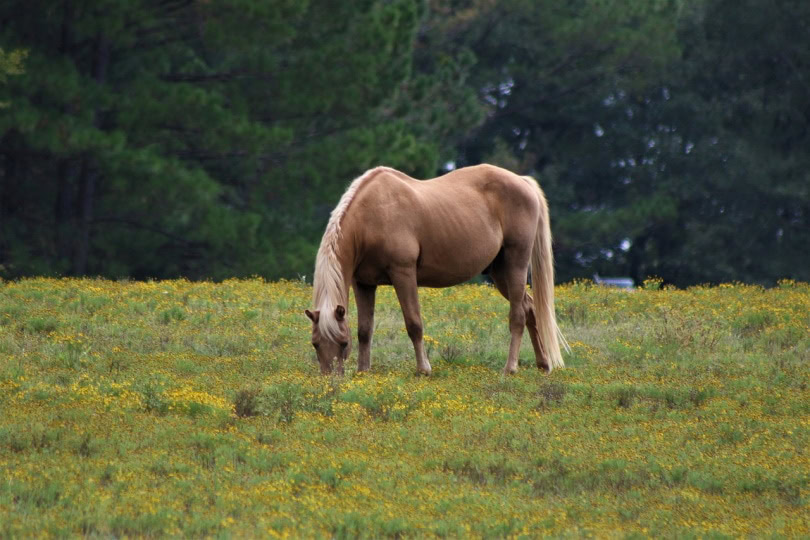
Buckskin horses can come in a variety of breeds, shapes and sizes, so it’s not possible to accurately predict the traits of all horses that bear this coloration. However, the history and bloodlines associated with the buckskin genes are known for strength, stamina, and hard work.
The buckskin has been around for a very long time. It is believed they were first brought to North America by the Spanish in the 1500s. Some of these horses were released into the wild and then bred with the wild horses throughout the west. Because of their strength and intelligence, the buckskins were often used by cowboys.
The buckskin is also familiar to many of us because they are often used in television and film. For example, the horses heavily featured in Dances with Wolves, Bonanza, Spirit, and Gunsmoke were all buckskins.
Health & Care
Because the buckskin is just a name for the coloring, not a specific breed, their care doesn’t require much in the way of special tasks. However, there are a few tips you can follow to ensure your buckskin is beautiful and healthy.
Because of their lighter coat color, you may want to bathe your buckskin more frequently to keep its coat free of mud and dirt. Some owners also claim that the light coat color attracts more flies and other pests than darker coats. Daily grooming and brushing will help you bond with your horse and make sure their body is free of injuries and pests.
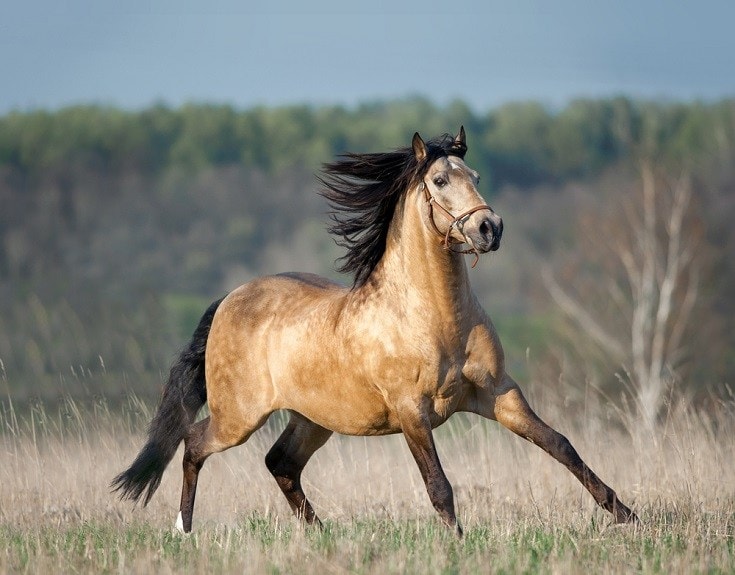
Breeding
The buckskin coloring is the result of the cream dilution gene working on a bay horse. The buckskin coloring is found on many different breeds of horses.
Suitable For
The buckskin does well on ranches and in other environments where they can work. Because they are usually hardy, strong, working horses, it is important to know their limits. Generally, horses should carry no more than 15%-20% of their weight. They need to eat about 1%-3% of their body weight each day and need plenty of water as well.
Did You Know?
In the buckskin, the dilution gene works on the red portion of the bay coloration, leaving the black points, tail, and mane unaffected. If the cream dilution gene acts on a chestnut horse, which is all red with no black, the body becomes a light golden tan, while the mane and tail become silvery-white, creating the Palomino.

Dun Horse Overview
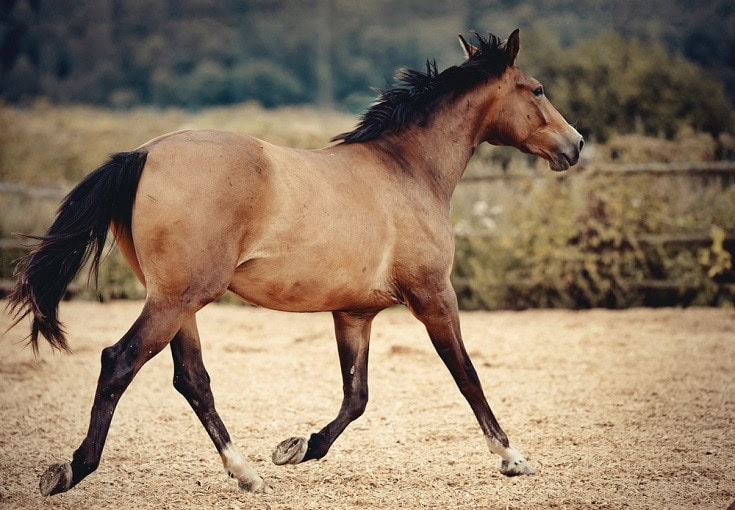
Dun horses are quite beautiful. They can be differentiated from the buckskin by the range of coat base colors and the distinctive stripe that runs the length of their back. Dun horses can be tan, like the buckskin, but they can also be reddish-brown, gray, apricot, and others in between. The stripe on the back and the darker coloring around the face are usually darker versions of the base coat color. Some dun horses also have darker shoulder stripes.
The dun coloring can be traced back to the Stone Age. They are believed to be one of the oldest color variations in horses. Some horses in cave drawings have distinct dun markings, leading historians to believe the dun horse was common in the wild and under human care at that time.
It is interesting to note that a horse cannot be both buckskin and dun. It can only be one or the other.
Health & Care
Like the buckskin, the dun has few care needs that would not be typical of any horse. They need daily grooming and plenty of fresh water. Their food needs are determined by their size and activity levels.
Breeding
Interestingly, there are only a few breeds of horses that only come in the dun coloring. These include the Fjord Horse of Norway and the Przewalski Horse, a wild horse found in Central Asia.
Suitable For
Duns can be any breed of horse that has the special markings and colorings brought on by the dun dilution gene. Therefore, the best use of a specific dun horse depends on the breed and personality of the horse. Most duns do tend to be of the shorter, stockier variety and are often better suited to life as companions or for horseback riding.

Which One Is Right for You?
Since the buckskin and dun refer merely to the coloring, the right horse for you depends on what characteristics you are looking for in a horse. The cream dilution gene in buckskins does tend to produce a hardy, strong horse suitable for working. The dun dilution gene can potentially be found in any horse breed but is more common in some of the older, more primitive horse and pony varieties. The coloring of these two beautiful horses does mean it may take more work to keep them clean, especially if you are considering a buckskin or lighter-colored dun.
Featured Image: Top – Linzmeier1, Pixabay | Bottom – Pezibear, Pixabay
